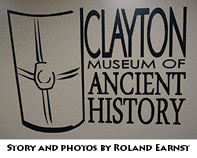 Last September the Clayton Museum of Ancient History opened at York College in York, Nebraska. The museum has rare artifacts from the biblical times of both the Old and New Testaments — with an emphasis on the Roman soldier. We want to take you on a mini-tour of the museum, but first we ask the question, “How did a museum of ancient history get named in honor of John N. Clayton and how did it come to be located in York, Nebraska?”
Last September the Clayton Museum of Ancient History opened at York College in York, Nebraska. The museum has rare artifacts from the biblical times of both the Old and New Testaments — with an emphasis on the Roman soldier. We want to take you on a mini-tour of the museum, but first we ask the question, “How did a museum of ancient history get named in honor of John N. Clayton and how did it come to be located in York, Nebraska?”
It all started in the 1980s when John Clayton gave a lecture series at the University of Colorado in Boulder. There was a young student named Foster Stanback who, like John, had grown up in an unbelieving family. Foster considered himself an atheist/agnostic, but he was, “In a searching mode looking for God and with a lot of questions.” He saw some signs on the campus saying “Does God Exist? Come hear a former atheist talk about God.” Foster thought that sounded interesting and considered going to hear the lecture instead of going to a beer party that night. Foster found the auditorium and was amazed at John's presentation as he spoke about science and faith. Even more impressive to Foster was the follow-up question-and-answer session. He was impressed with the way John handled questions from skeptical University of Colorado professors. Foster said, “I never knew that there were real reasons why you could believe.” That night he came to understand that science can point us toward God because there is so much evidence of design that “indicates there is some kind of an Engineer behind all this.”
That evening was a turning point in Foster’s life and he began to study the Bible and became a Christian. Foster went on to become successful in business and made an income that allowed him to put together an impressive collection of rare artifacts from biblical times. His desire was to do what John was doing in making presentations to people showing the historical and scientific evidence for God. Foster Stanback founded the Apologetics Research Society.
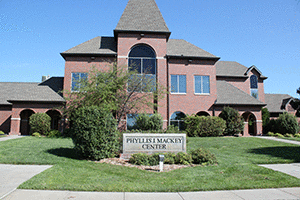
Over time the artifacts ended up sitting in a garage and Foster decided that they needed to be properly cared for and made available for the public to see. Through a series of events Foster reached an agreement with York College to establish a world-class museum to house and display the artifacts so people could enjoy and learn from them. He even donated the money needed to renovate the ground level of the Mackey Center on campus to house the museum.
That is how the museum came to be, but then there was a need to give the museum a name. Foster wanted to name it in honor of his mentor, John Clayton. John did not want the museum to be named after him, but insisted that it should be named in honor of Foster Stanback who made it possible. Foster said, “None of this would have happened without you, John.” Foster believes that it is important for him to honor the man who brought him to new birth in Christ and who has been his mentor. Finally John humbly agreed to the use of his name. John was convinced that our spiritual birthday should be emphasized since it is for eternity and therefore it is good to honor those who lead us to Christ.
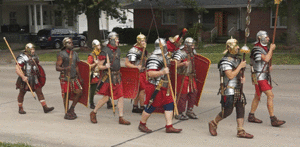
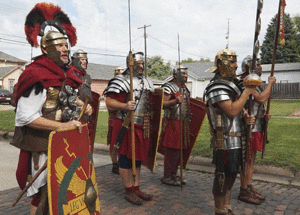 We recommend going to York College, Nebraska, to visit the Clayton Museum. However, we would like to give you a mini-tour in pictures.
We recommend going to York College, Nebraska, to visit the Clayton Museum. However, we would like to give you a mini-tour in pictures.
On the opening weekend the Legion VI Victrix, Roman legion re-creators from California, were there to enhance the occasion. These people are experts in the life of ancient Roman soldiers and they were very impressed with the Stanback collection and the museum’s professional quality presentation.
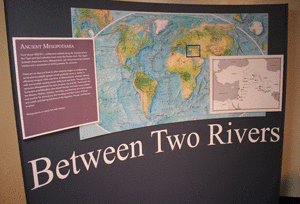 When you enter the museum you will see a time-line of ancient Mesopotamia.
When you enter the museum you will see a time-line of ancient Mesopotamia.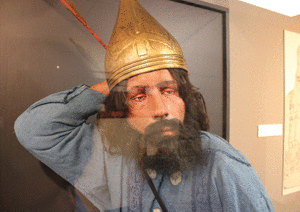
Also you will see a very realistic figure of an ancient Assyrian archer along with reproductions of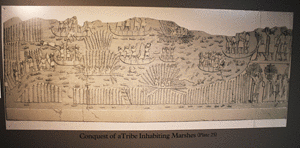 Assyrian murals depicting the warfare of the time.
Assyrian murals depicting the warfare of the time.
Next you will enter a section devoted to the Roman Monarchy followed by the Roman Republic.

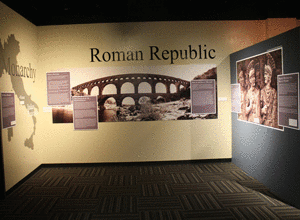
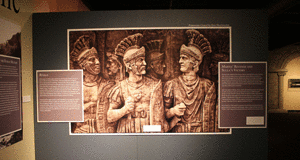
A section on the Roman Empire displays actual tools, nails, household items, oil lamps, coins, gaming dice, signet rings, and Coliseum admittance tokens.
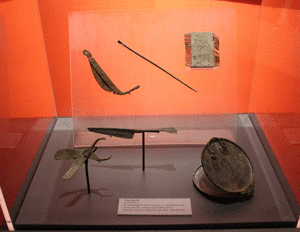
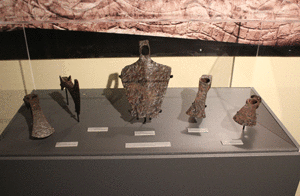
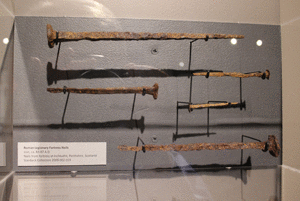
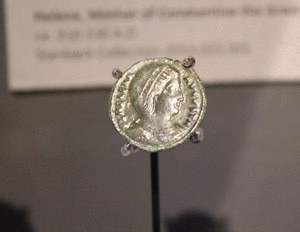
There are also actual items of weapons and armor such as, swords, spear heads, sling bullets, helmets, and greaves.
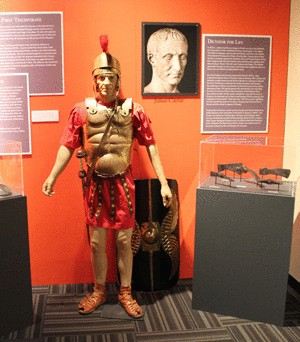
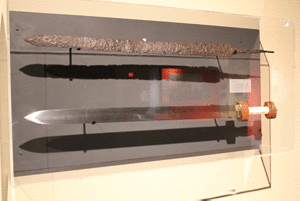
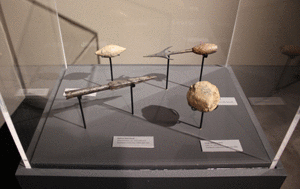
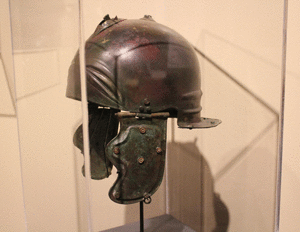
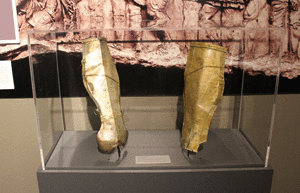
On a large screen is projected an animated overview of the growth and decline of the Roman Empire.
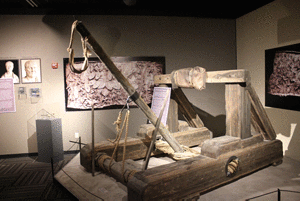 There is also a Roman weapon of mass destruction called the “onager,” which means “wild donkey.” It was given that name because it has quite a kick to it.
There is also a Roman weapon of mass destruction called the “onager,” which means “wild donkey.” It was given that name because it has quite a kick to it.
In the Clayton Museum you will find items relating to Roman history.
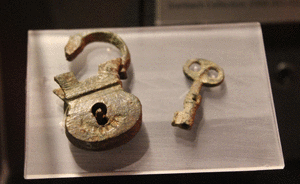
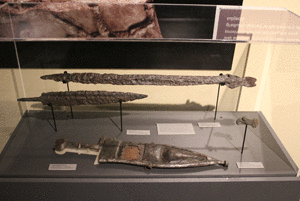
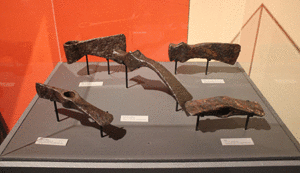
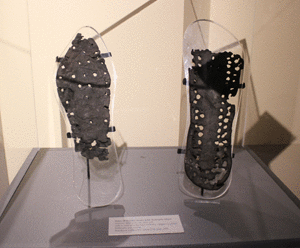
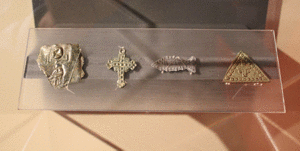 You will also find items left behind by the early Christians.
You will also find items left behind by the early Christians.
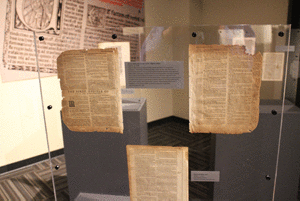
There is also another section displaying portions of early Bible translations such as the Geneva Bible, also known as the Pilgrim’s Bible.
 A temporary exhibit shows pictures of various locations of great historical significance which have been damaged or destroyed by acts of war and conflict. Many of them are very recent.
A temporary exhibit shows pictures of various locations of great historical significance which have been damaged or destroyed by acts of war and conflict. Many of them are very recent.
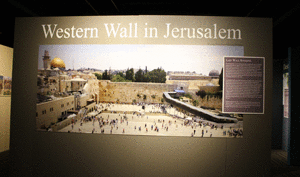 Another area displays a large picture of the Western Wall in Jerusalem surrounded by many visitors. There is also a model of a section of the wall where you can write your prayers on pieces of paper and put them into the cracks in the wall just as Jewish visitors in Jerusalem do today. There is also a scale model of the Temple in Jerusalem at the time of Jesus.
Another area displays a large picture of the Western Wall in Jerusalem surrounded by many visitors. There is also a model of a section of the wall where you can write your prayers on pieces of paper and put them into the cracks in the wall just as Jewish visitors in Jerusalem do today. There is also a scale model of the Temple in Jerusalem at the time of Jesus.
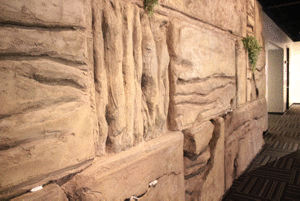
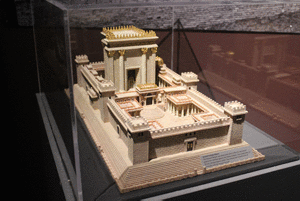
There is also a children's area which was still being developed.
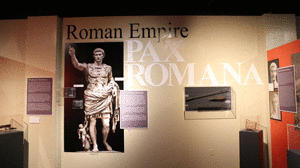
The Clayton Museum of Ancient History is an excellent tool for learning about the world in biblical times and during the early period of the church.
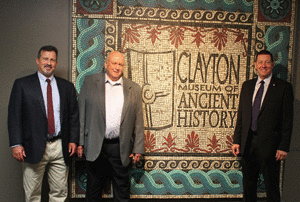 John Clayton is very pleased with the museum and honored to have it named after him. This picture shows (from left to right) Foster Stanback, John Clayton, and York College president Steve Eckman standing in front of the beautiful mosaic at the entrance to the museum. John pondered over his legacy from the work that he has done for over 40 years. He said, “My legacy is Foster Stanback and John Oakes and Doug Jacoby who … know so much more, are so much more creative and can do so much more than I could ever do.” John is honored to have had a part in the lives of these men. John said this about the Clayton Museum with the Foster Stanback collection, “This is going to be an incredible tool … and I’m honored to be even a distant part of it.”
John Clayton is very pleased with the museum and honored to have it named after him. This picture shows (from left to right) Foster Stanback, John Clayton, and York College president Steve Eckman standing in front of the beautiful mosaic at the entrance to the museum. John pondered over his legacy from the work that he has done for over 40 years. He said, “My legacy is Foster Stanback and John Oakes and Doug Jacoby who … know so much more, are so much more creative and can do so much more than I could ever do.” John is honored to have had a part in the lives of these men. John said this about the Clayton Museum with the Foster Stanback collection, “This is going to be an incredible tool … and I’m honored to be even a distant part of it.”
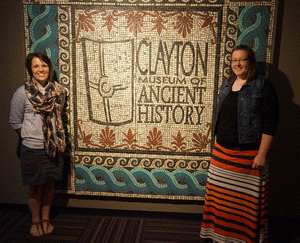
The mosaic and other artwork in the museum are the work of Kate Dibbern, shown here on the left.
On the right is Amber Soderholm, the museum's curator whose talents have made this museum truly world-class.
Check out the museum's web page at: www.claytonmuseumofancienthistory.org/
To learn more about the work of John Oakes and the Apologetics Research Society founded by Foster Stanback go to: www.evidenceforchristianity.org
To learn more about Douglas Jacoby's work go to: www.douglasjacoby.com
To learn more about Legion VI Victrix Roman soldiers visit: www.legionsix.org
Picture credits:
All photos were taken by Roland Earnst.
